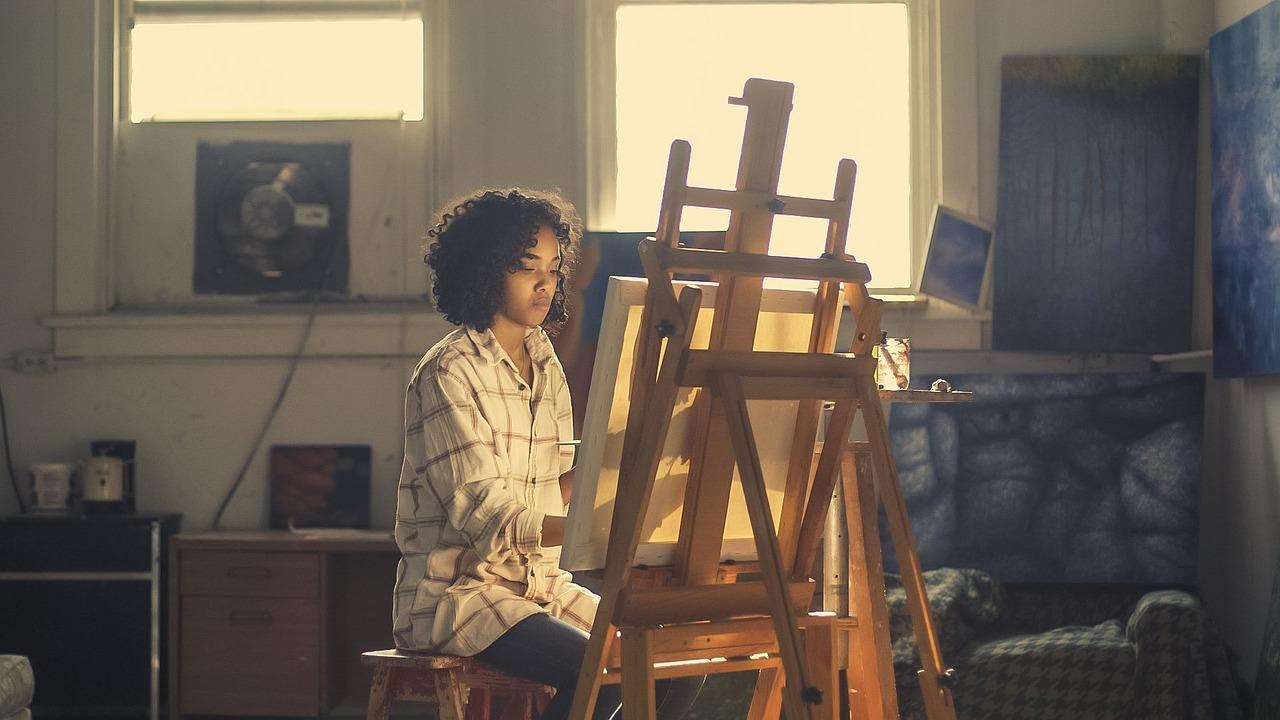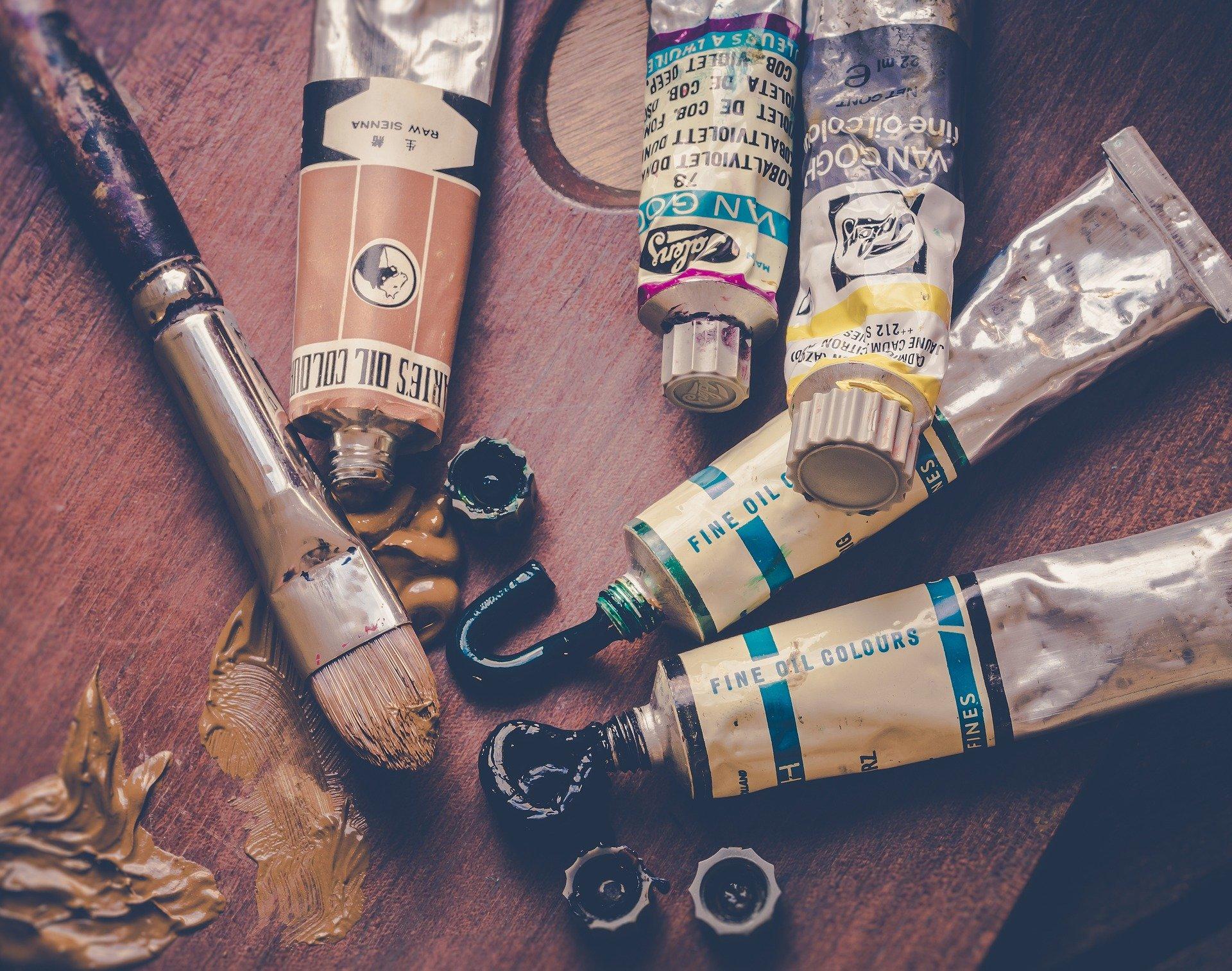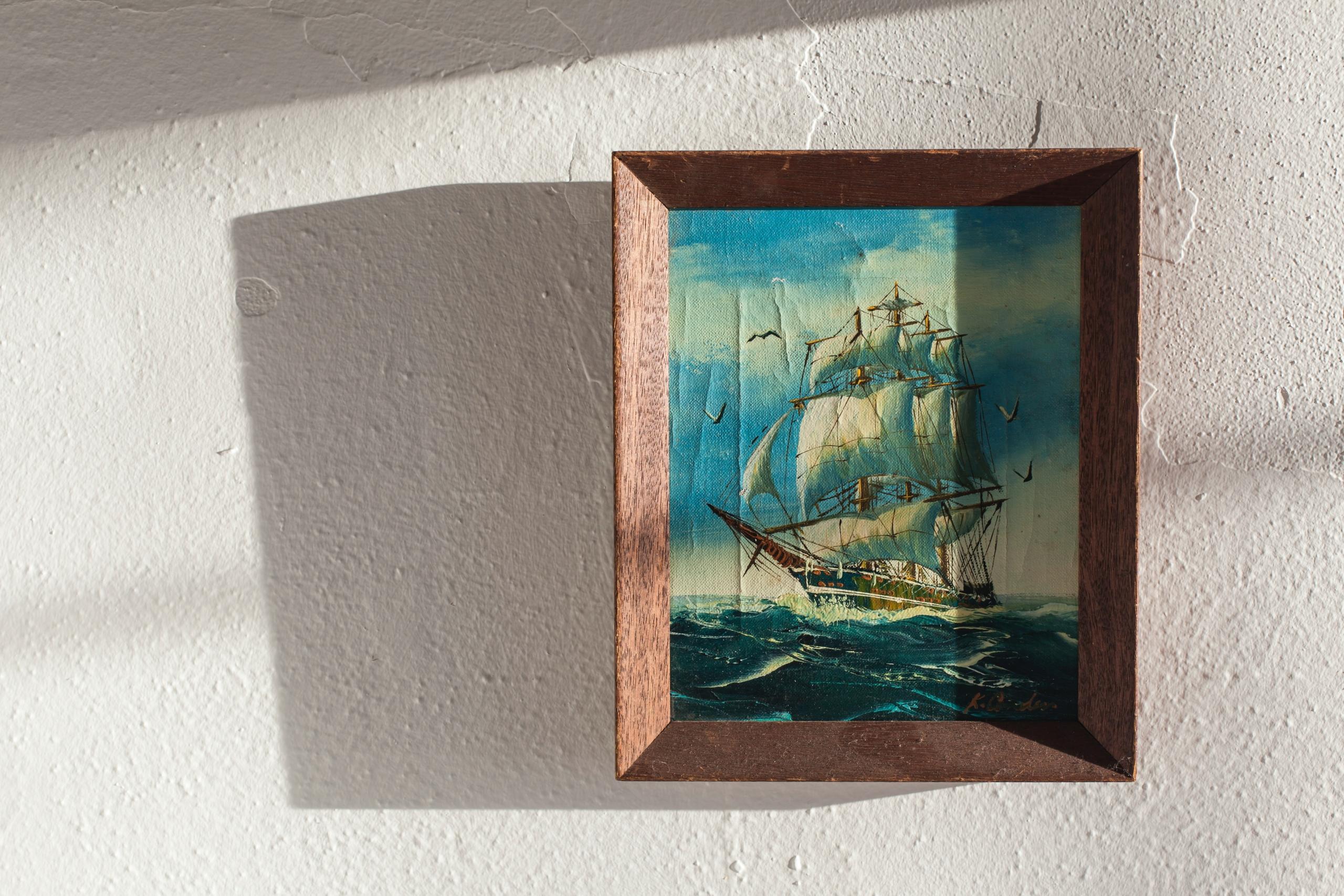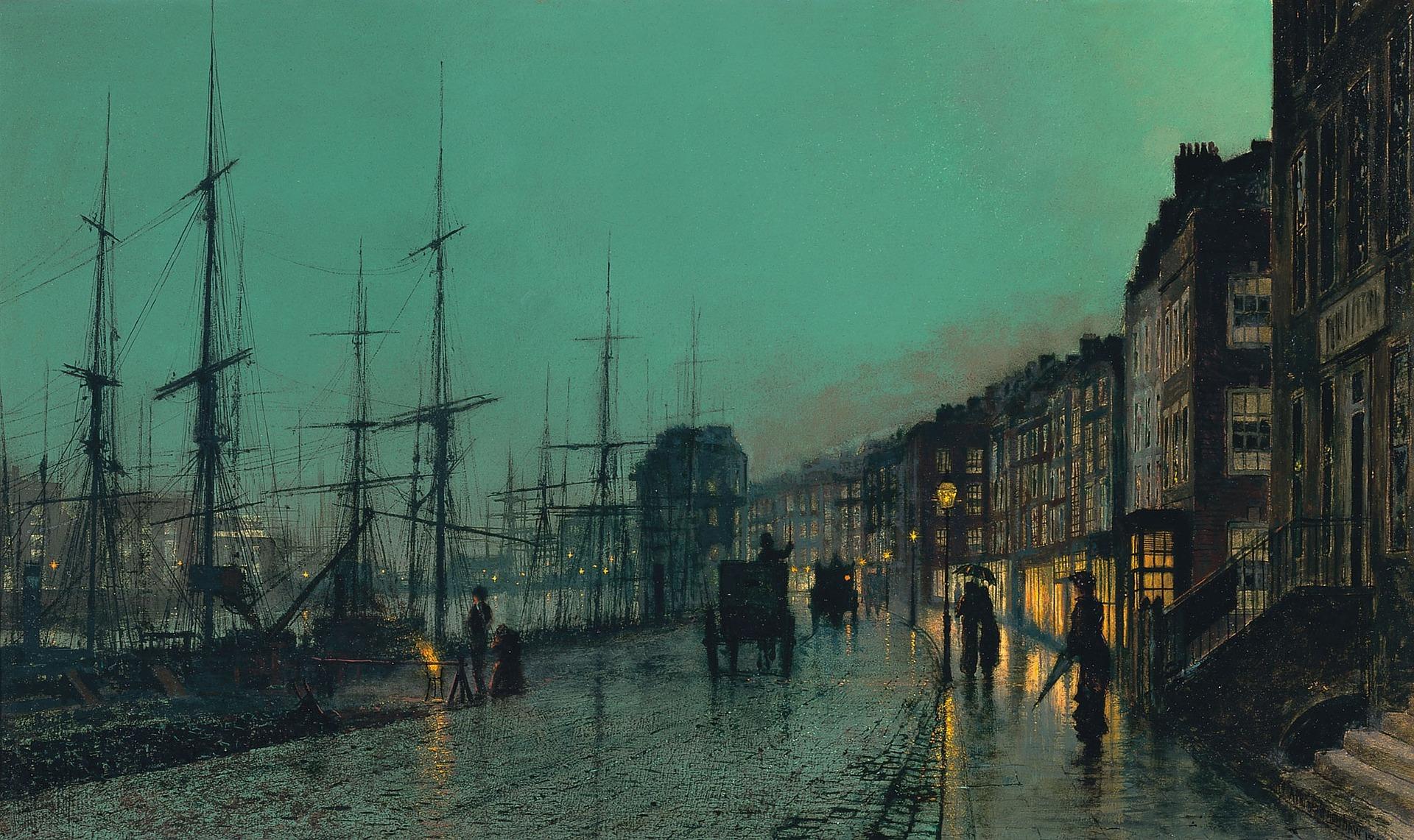You follow a long-standing tradition in the art world when you paint on canvas. One of the first surviving oil paintings on canvas is from the 14th century.
The medium rose to popularity during the Italian Renaissance in the 1600s. Although there are many different painting mediums available today, canvas is still one of the most popular surfaces for oil and acrylic paintings. A wooden frame is usually used to firmly stretch the canvas, making it simple to paint on and later show.
For generations, canvas has been a favorite for painters, and for good reason. It is a flexible material that can support a range of media and is strong enough to last for many years without losing its integrity. However, numerous canvas types are available, making it difficult to choose the best one for your particular requirements. In this article, we'll look at the various varieties of painting canvases, their features, and how to pick the best one for your upcoming art project.

History Of Canvas Painting
Canvas painting has a rich history that evolved over centuries, reflecting changes in art, culture, and materials.
Ancient and Early Use
Early Painting Surfaces
Before canvas, artists used walls (frescoes), wood panels, parchment, and cloth as painting surfaces. Ancient Egyptians painted on linen, but these were not true canvases as we know them today.
Introduction of Canvas (14th - 16th Century)
Rise of Canvas & Materials Used
The use of canvas as a painting surface began in Italy during the late Middle Ages, becoming popular by the 15th century. Early canvases were made from tightly woven linen and treated with a gesso coating (a mix of chalk and glue).
Renaissance and the Golden Age (16th - 17th Century)
Renaissance Paintings Era
By the 16th century, canvas became the preferred medium across Europe, especially in Venice due to its humid climate, which caused wooden panels to deteriorate.
Modern Era (18th - 20th Century)
Impressionism and Beyond
Artists like Claude Monet, Van Gogh, and Picasso utilized canvas for groundbreaking styles, including Impressionism, Expressionism, and Cubism.
Contemporary Era (20th Century - Present)
Synthetic Canvases
Modern canvases often use synthetic blends, providing greater durability and cost efficiency. Canvas is now used in digital printing and mixed media artworks.
Types of Canvasses for Painting
Canvas is a classic painting surface or support in technical terms. It's worth spending the time to master this method because it has several benefits over paper, not the least of which is that it's considerably more durable, ensuring your work lasts for years.

The most often used canvases are produced out of cotton and come pre-primed with acrylic gesso, while the more expensive ones include linen canvas primed with oil primer. If you want to splurge, larger art galleries frequently provide a custom canvas-making service that provides you with a sturdy, ready-made canvas that will last a long time.
Cotton Canvas
The most popular kind of canvas for paintings is cotton. It's a lightweight, inexpensive choice that's perfect for amateurs or artists on a tight budget. Cotton canvas can contain a variety of paint, such as acrylics, oils, and watercolors, and has a range of textures, from rough to smooth. Cotton canvas is a great material for large-scale projects because of its propensity to stretch and adapt to various forms and sizes. It is, however, less resilient than other kinds of canvas and may eventually be more prone to warping or stretching.
Linen Canvas
Many skilled artists prefer linen canvas, which is regarded as a high-end option. It is renowned for its resilience, ability to hold delicate features and resistance to stretching and warping. Smooth linen canvas has a clean surface that is ideal for painting. It has a lower propensity to deteriorate over time and has a long lifespan without losing integrity. However, it is less elastic than cotton canvas and can need more work before usage.
Polyester Canvas
In place of conventional cotton and linen canvas, you can opt for a synthetic polyester canvas. It is a strong, lightweight choice that withstands dampness, ripping, and warping. Polyester canvas is excellent for outdoor use because it won't fade or yellow from exposure to the environment. Acrylic or oil paintings look fantastic on polyester canvas because of its slightly shiny surface. It can be more challenging to stretch than cotton or linen canvas, and it might not hold watercolors as well as regular canvas.
Canvas Paper
A more affordable option to regular canvas is canvas paper. It is a compact, lightweight solution that is simple to roll or fold, making it perfect for traveling artists. Similar to genuine canvas, canvas paper comes in a variety of textures and may support a range of media.
For painters who prefer the texture and feel of canvas but don't want to cope with the extra weight and cost of regular canvas, canvas paper is a practical alternative. It may not last as long without disintegrating, though, as it is not as strong as other kinds of canvas.
Synthetic Canvas
A versatile, long-lasting alternative is synthetic canvas, which is constructed of PVC, nylon, or vinyl. As a result of its resistance to fading, mildew, and the elements, it's a common choice for outdoor and large-scale artwork. Synthetic canvas is a sensible choice for public places or high-traffic areas because it is also simple to maintain and clean.
For acrylic or oil painting, synthetic canvas has a smooth, non-porous surface that offers a stable foundation. It might not have the same texture as conventional canvas, though, and stretching it might be more challenging.
Other Alternatives to Traditional Canvas
Canvas boards are excellent for use in classrooms since they are thin, light, and less likely to warp in smaller sizes. They are created by adhering primed canvas on a board, typically cardboard. They usually have a toothy surface that is excellent for displaying brushstrokes.
Compared to canvas boards, gessobords are pricey, but they are well worth the money. They are significantly stronger while still being lightweight and portable because they are made of high-density hardwood.
Additionally, they are available in thicknesses ranging from the common 1/8" to 3/4", 1 1/2", and 2". Gessobords are a superior substitute for conventional wooden panels and linen canvases because of their non-porous, gently sanded surface, which allows for excellent brush control.
A fantastic alternative to wood is metal. It doesn't rot, is lightweight, naturally non-porous, and incredibly smooth. The best option is copper, but aluminum is also a decent alternative. To ensure that your paint adheres to the metal, you must still prime the surface with a good oil primer.
Learn more about what mediums you should be using with drawing classes on Superprof.


Priming Your Canvas
You must prime whatever painting material you decide to use for your support. Canvases that have been primed may be porous or non-porous. Your canvas will become porous if you prime it with acrylic gesso; it won't become porous if you prime it with oil. The fundamental idea is that because the paint's water content is pulled into the support itself, a porous primed support will enable the paint to dry more quickly. The paint will only dry spontaneously by evaporation on non-porous support.
You'll have more control over your brushstrokes if you use a non-porous primer since the paint will glide over the surface and stay wetter for longer. Paint from the brush will frequently smear on a non-porous primer. Use a broad priming brush to prime your support for an even finish. Work horizontally across the entire surface in one direction, starting from one side of the support, and then give it time to dry. After drying, rotate the support 90 degrees and carry out the procedure once more, working across the initial coat's brushstrokes. Once more, give it time to dry before continuing as necessary.
Best Paintbrushes for Painting on Canvas
Flat Brushes
The bristles on flat brushes are organized in a broad, flat form. Depending on how you hold the brush, it can produce thick or thin strokes. The best flat brushes will feel firmer and more springy, allowing you to really get paint onto the canvas. A flat brush with a tapered edge is another option, which is excellent for one-stroke painting methods like combining colors to create flowers, leaves, and foliage.
Round Brush
A round brush has bristles that form a rounded shape and tip sharply. You can paint finer lines and details using this brush.
Filbert Brush
A Filbert brush is a flat brush that is thinner and has bristles ending in rounded tips. It can create large brush strokes, tiny lines, or tapering marks depending on the angle and pressure applied. Older Filbert brushes are excellent for dry brushing.
Liner or Rigger Brush
Long bristles on a liner or rigger brush either have a flat or pointed tip. This brush works well for consistently creating fine lines and for signing your artwork once it is complete.
Fan Brush
A fan brush contains bristles organized in the form of a thin fan. This brush works well for mixing and feathering colors.
Mop Brush
A mop brush has a large capacity for liquid and color. It works well for washes, particularly with watercolors. Keep in mind that this brush must be well cleaned after use to avoid damage.
Discover more tips and tricks with drawing classes on Superprof!
Best Types of Paints for Canvas
Acrylic
Acrylic paint is one of the most often used paint kinds for canvas paintings. It dries rapidly, needs few supplies, and is simple to work with. Acrylic, which can be applied with a brush or palette knife, works best on a primed canvas. The best acrylic paint to use on canvas is one that is thicker ("heavy body"). When painting on an easel, thinner acrylic paint, or "fluid acrylic" can flow downhill and needs much more paint to cover the surface completely.

Oil Paint
Oil paint, whether regular or water-soluble, is perfect for canvas painting. A heavy-duty painting surface that won't be harmed by oil is required for its thick, viscous texture, and a primed canvas offers just that. Similar to acrylic, oil paint can be applied with a brush or a palette knife, or it can be applied with just oil pigment bars.
Making the Right Choice in Canvasses
There are a few things to take into account while selecting the best canvas for your art. Think about the kind of medium you'll be using. Certain media work better on some canvases than others. For instance, if you intend to use watercolors, you should pick a canvas made of cotton or linen that can contain water without degrading or warping.
Find out about the proper artistic techniques with drawing classes on Superprof today!
Take your project's size and shape into account. Cotton canvas is a better option for large-scale art projects or irregular shapes since it is more elastic and can adapt to varied sizes and shapes. Conversely, linen canvas is less elastic and could need more preparation before use. Canvas paper can be the ideal alternative if you're working on a small project or want a more portable solution.
Finally, think about your spending limit and desired level of quality. For beginners or those on a tight budget, cotton canvas is the most cost-effective choice. The premium option of linen canvas offers exceptional quality and durability but is more expensive. For outdoor or large-scale artwork, synthetic canvas is a feasible option, but it might not have the same texture as conventional canvas.
















